People
Feeling Overwhelmed? 16 Artists Share Their Best Self-Care Tips, From Eating Cookies to Walking in Graveyards
If the pandemic has stressed you out, take note.
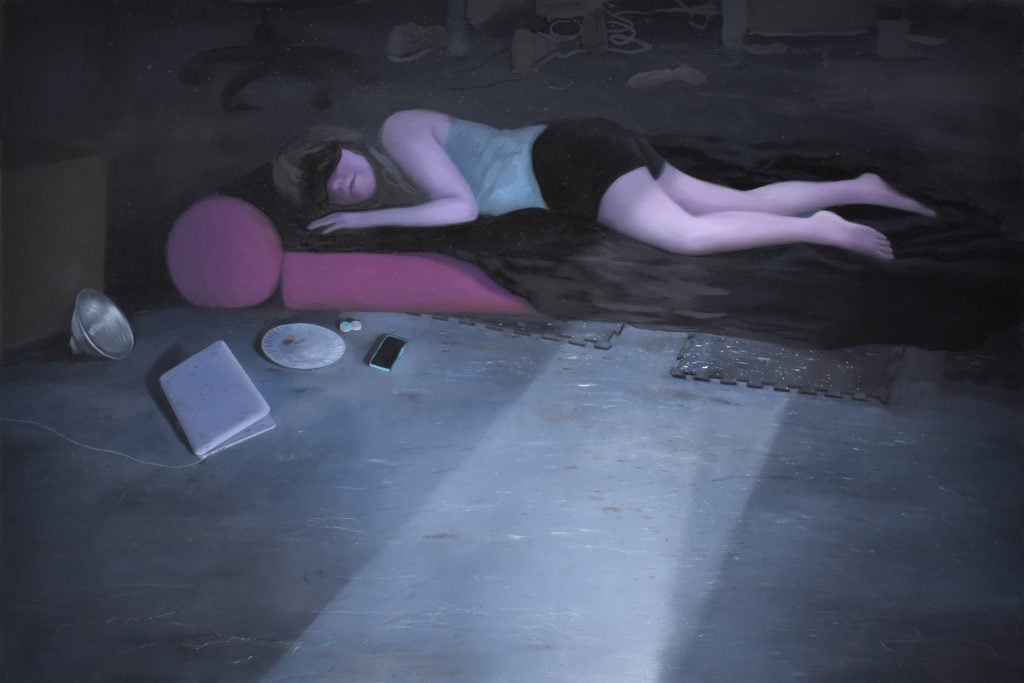
If the pandemic has stressed you out, take note.

Artnet News

“Self-care” has become the buzzword of the day—a quick internet search for the term brings up everything from tips for better sleep to lymphatic massage, eye masks and TikTok fitness, ice cream, face masks, and something called Zoom reiki.
The need to care for our mental and physical health has never been more important as the boundaries between work and home remain blurry and the pandemic drags on. So we asked some folks that are used to working alone in small studios and have honed specific ways of keeping an even keel during the most turbulent times: artists.
Some submitted their answers in the form of text, others, a single photograph. From reading tarot cards to walking in a cemetery, here’s how 16 artists engage in self-care.
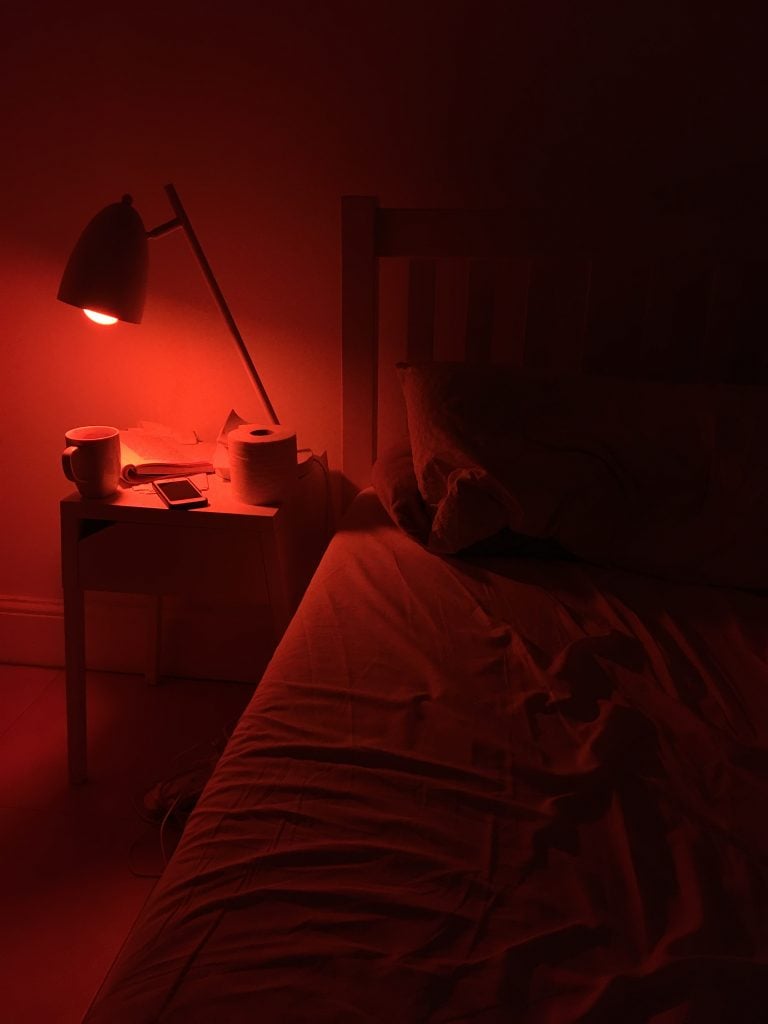
Leah Clements, Bed (2021). Digital Photo, print sizes vary. Courtesy the artist.
The London-based multi-disciplinary artist, who is currently taking part in a residency at the Serpentine Galleries focusing on access and disability, puts the relationship between our psychological, emotional, and physical selves at the core of her work. Her top recommendation for self-care is simple and direct: get some sleep. “There’s something about being in another place, outside this reality, every night (and trespassing in the day),” Clements says.
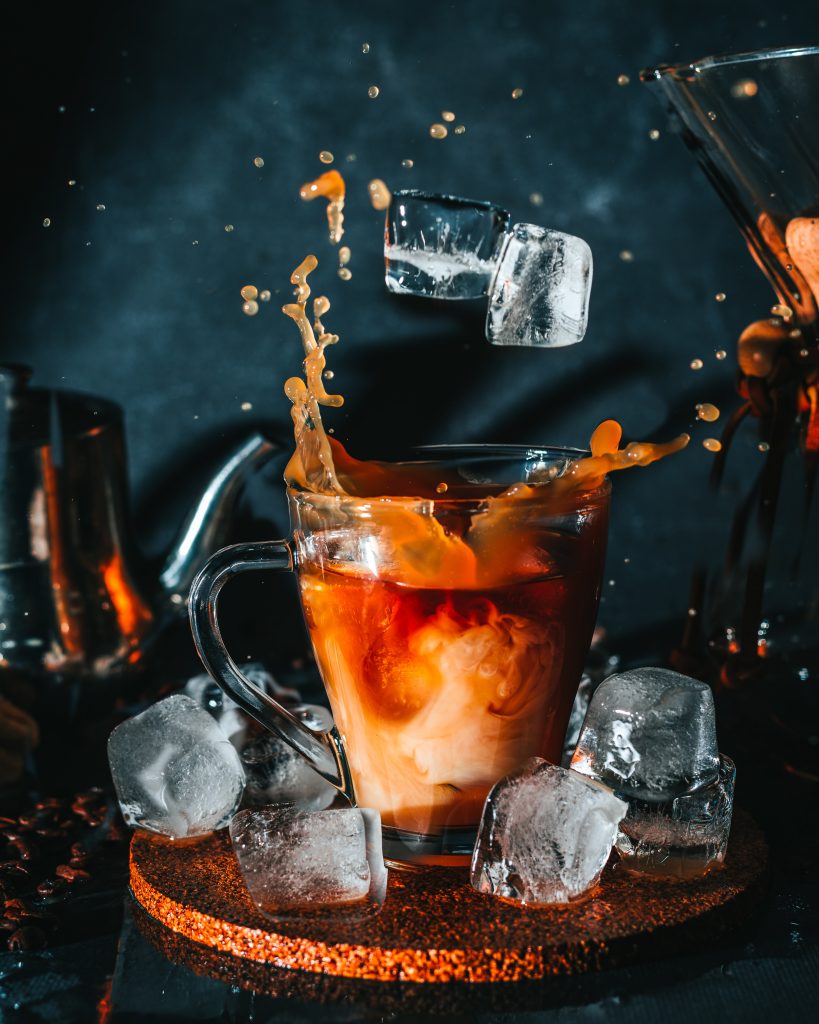
Artist Jeanette Hayes says you should drink an iced coffee everyday. Photo: Tamas Pap on Unsplash.
The New York-based multi-media artist and painter has a chock-a-block list of activities and treats that she relies on to stay content. This includes: “Iced coffee (everyday); Citibike (preferably the e-bike); Wear happy socks (they really make me happy!); Walk (10k steps a day or bust); Play the mobile game Blockudoku (my high score is 6602); Take vitamins (A, B, C, E, E, Zinc, Ginko Biloba, Keratin, Triple Ginsa); Eat candy (peppermint bark is my favorite); Clean my studio/clean my apartment (quickly!); Scroll (explore page, not friends); Go to C.O. Bigelow (to browse, perhaps purchase one barrette); Watch YouTube (cooking videos, walking tours); Go to a bookstore (to take pictures of books to borrow from the audiobook section of the NYPL); Get a facials (from Globar); Go to the Met (peruse the European paintings and American Wing, avoid arms and armor, visit the gift shop); Look at birds (whatever I can find); FaceTime (everyone).”
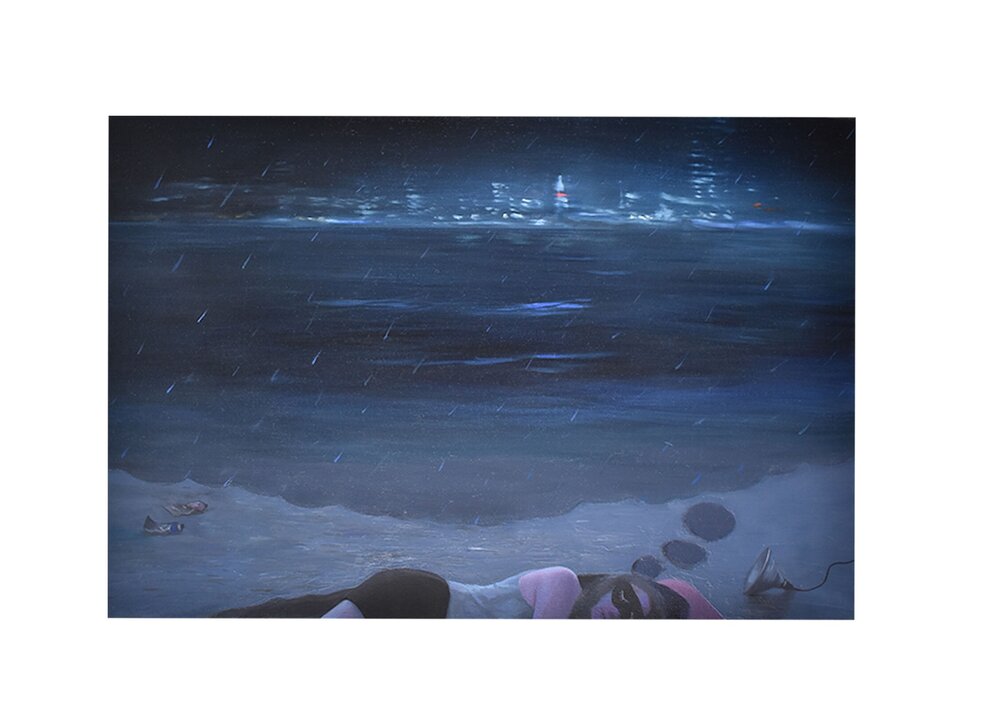
Brandi Twilley, East River (2020). Courtesy of the artist and Sargent’s Daughters.
The Brooklyn-based artist Brandi Twilley has always lived and worked in the same space, so she has found different ways to destress when at home. “I always turn my paintings around when I’m not working on them,” Twilley says. “It’s also important to get outside even just for a walk to get sunlight and fresh air.”
![Nathaniel Aric Galka, <i> my lover found me in the grasses...</i> (2019) [detail]. Courtesy of the artist.](https://news.artnet.com/app/news-upload/2021/11/thumbnail-4-768x1024.jpeg)
Nathaniel Aric Galka, my lover found me in the grasses… (2019) [detail]. Courtesy of the artist.
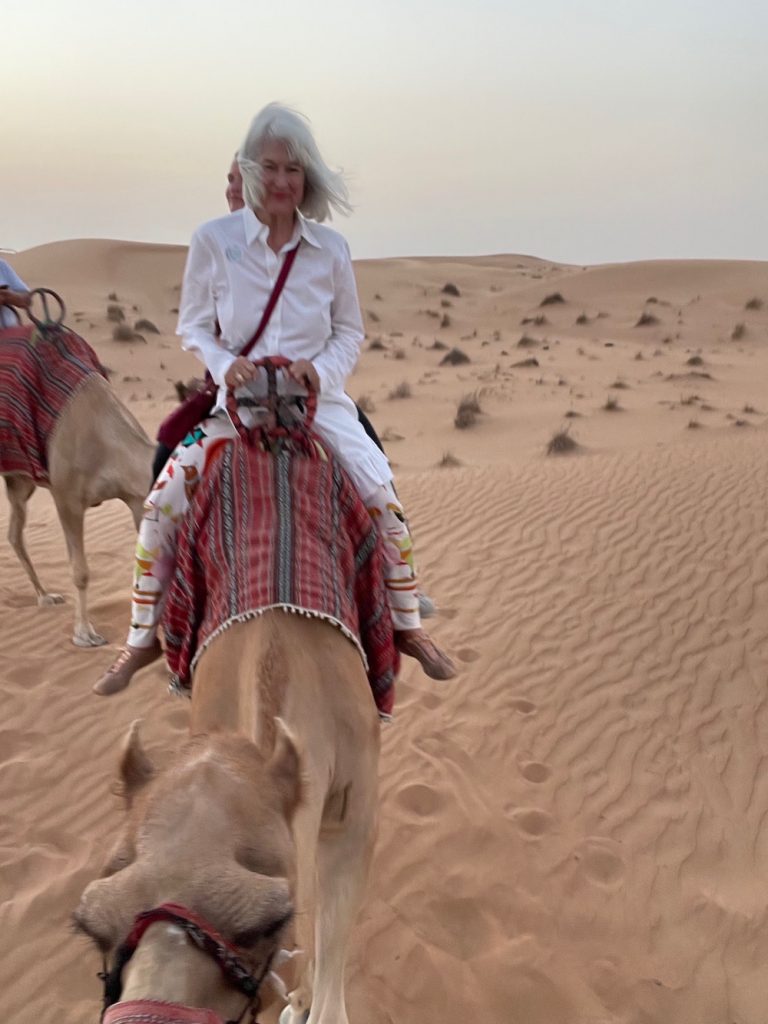
Artist Mia Fonssagrives Solow in Dubai. Image courtesy Mia Fonssagrives Solow.
The fashion designer turned sculptor and jewelry maker Mia Fonssagrives Solow also likes to get outdoors as much as possible when she needs a recharge. “I feast my eyes on nature, no matter what is going on,” she says. “The enormity of it is totally grounding.” But even if you can’t get to a forest or hiking trail, Fonssagrives Solow has a tried-and-tested prescription for self-care that can be found in your local deli or supermarket. Just eat “one chocolate chip cookie at night,” she recommends.
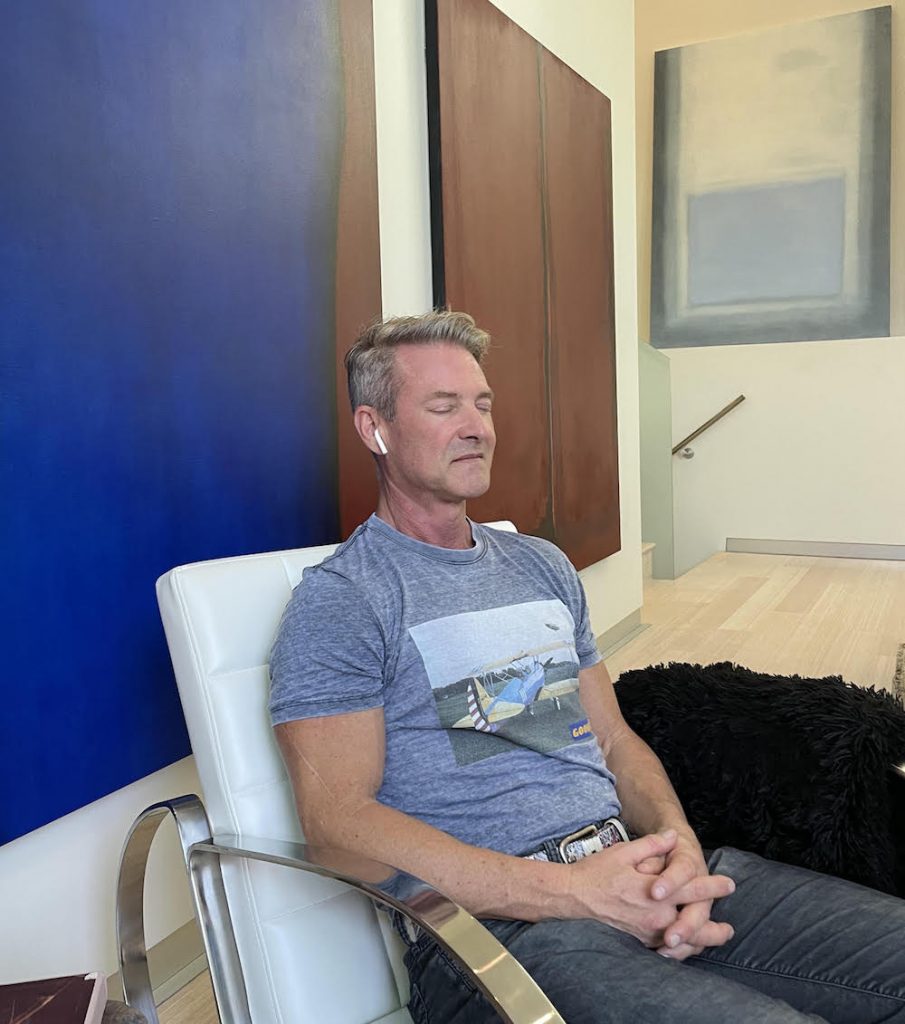
Todd Williamson engaging in acts of self care. Courtesy of the artist.
“The arts can be very stressful at times whether you are dealing with shipping, or galleries so I find that self-care is very important,” says the contemporary abstract painter Todd Williamson, who has several regular habits to keep his mind and body healthy. In addition to working out any work frustrations he might have by going to the gym as soon as he leaves the studio, four or five days a week, Williamson listens to meditation and binaural sound videos on YouTube. “I have a strong belief in the healing power of both sound and color,” he says, “and in combination, I think they are very powerful. Certain sound and color wave frequencies have shown healing effects on the body and mind. After the two years we all endured, we all need stability and calm!”
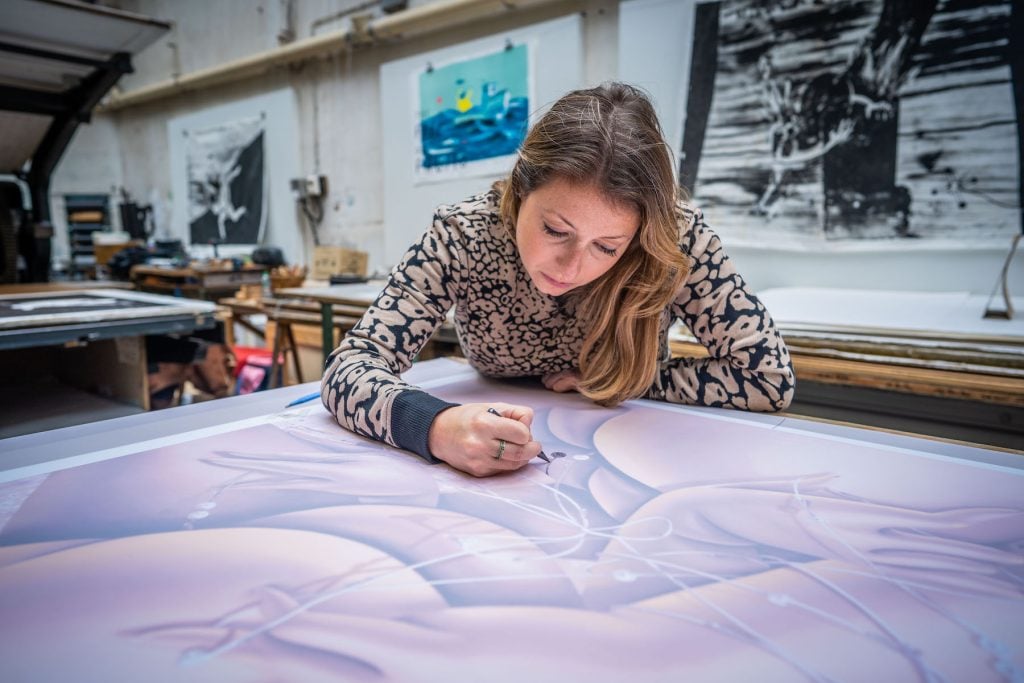
Sarah Slappey, 2021. Courtesy of the artist.
“I find that routines help me stay focused and also provide a structure for relaxation,” says the Brooklyn-based painter. “It’s easy to let work bleed into every other aspect of your life, but carving out relaxation time helps me let go. Also, don’t be afraid to invest in therapy. It’s time and money you won’t regret spending.”
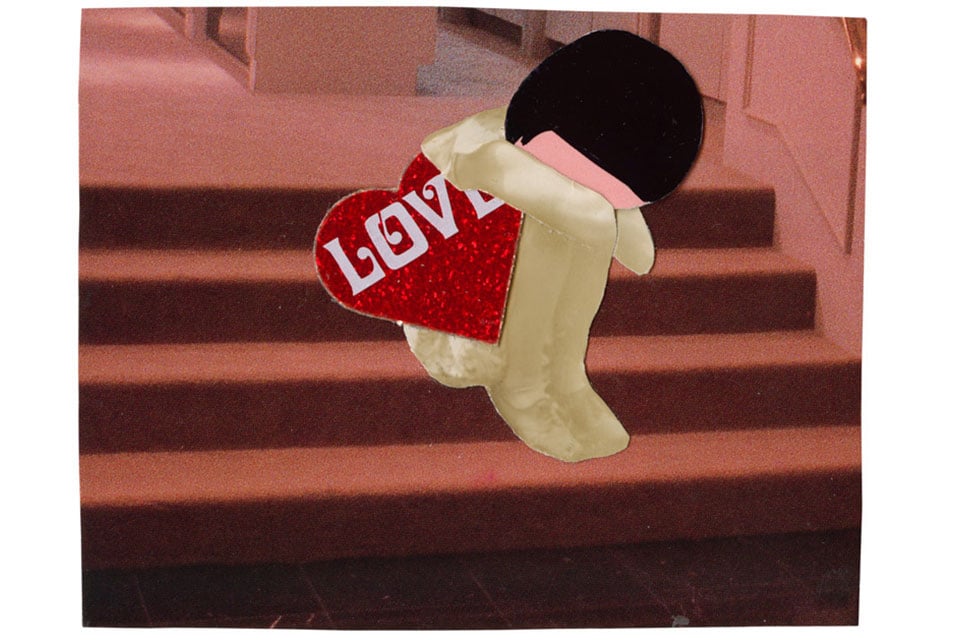
A work from “MY PAPER WORLD” Elizabeth Schoettle’s current museum show of her alter-ego PhoebeNewYork. Image courtesy the artist and Horsens Kunstmuseum.
“I tend to put a lot of pressure on myself because, as an artist, you can always be working,” admits the artist Elizabeth Schoettle. To find balance between her artistic process and personal life, she avoids looking too far ahead while she is creating work. “I try to stay in the present; that’s where mindfulness works for me,” Schoettle says. But this practice and mental reminders, she adds, such as notes around her workspace, “like cue cards, to reference when I feel overwhelmed.” Or it can be done in more creative ways. “I made a collage months ago, You are Bigger Than What is Making You Anxious. This work is a reminder—literally and figuratively—that I got this,” Schoettle says. “And, most importantly, I give myself permission to stop. Then the cycle starts again. Because to clear my head, I make art.
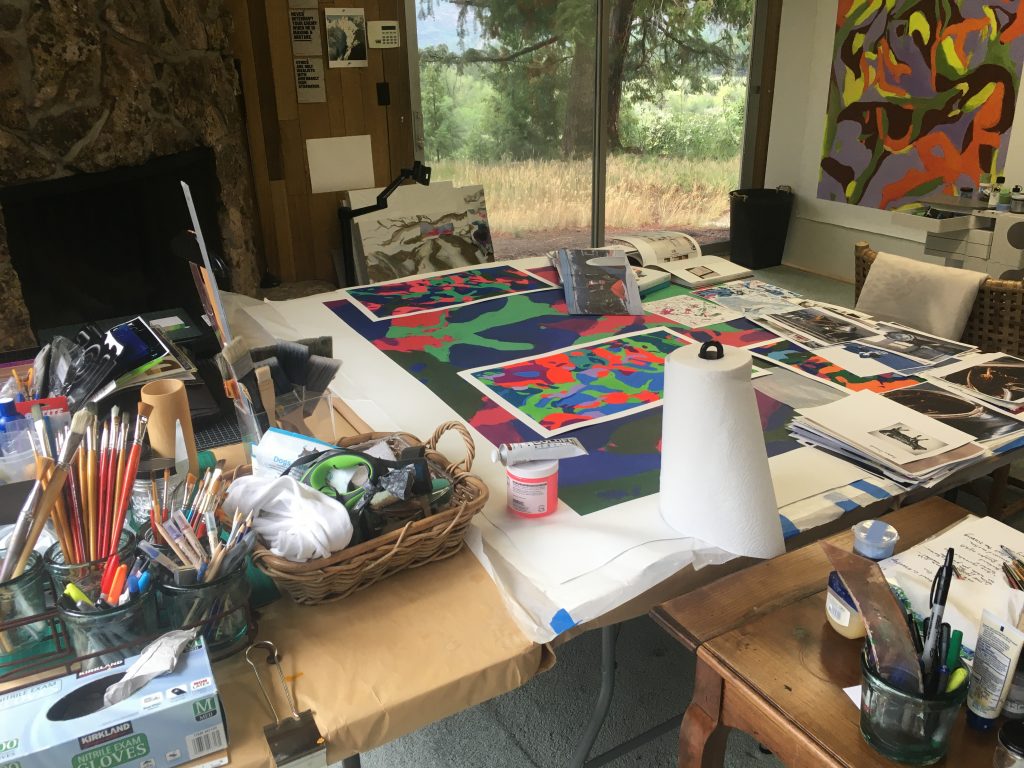
Courtesy Paula Crown Atelier.
“My daily six-pack of priorities kept me grounded during Covid, which has nothing to do with beer, nor the state of my abs,” artist and entrepreneur Paula Crown says. Her simple guide to a happy life is: 1) meditate 2) exercise 3) sleep 4) eat healthily 5) connect with family and friends and 6) make art. “When I complete this list I can add to it, but each morning starts anew with these six crucial steps.” Crown also says that finding time and space for deep uninterrupted work is essential. “Our lives are fractured with interruptions that affect our cognition,” she says. “The morning is the optimal time for me in terms of flow and focus. This is when I research and test ideas and am open to the spaciousness of serendipity.”
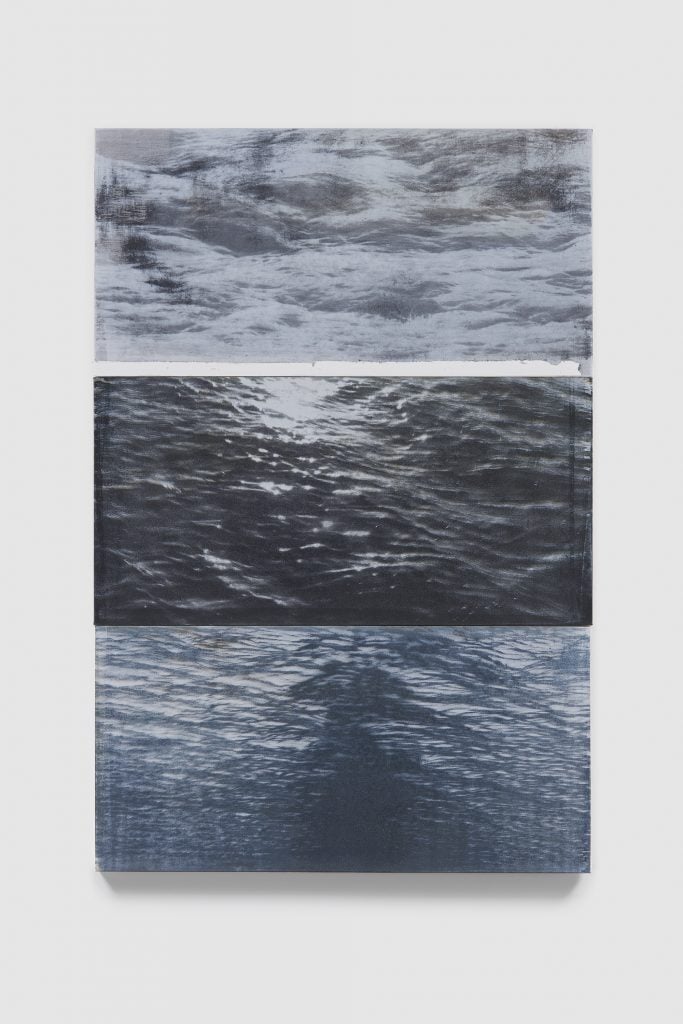
Byron Kim, B.Q.O. 4 (2020). © Byron Kim 2021. Image courtesy the artist and James Cohan, New York.
For the introverts out there, the minimalist painter Byron Kim has some easy advice to follow: “I sit quietly, without moving, for an hour,” he says, adding another suggestion that will appeal to the extroverts: “Or I find a friend.”
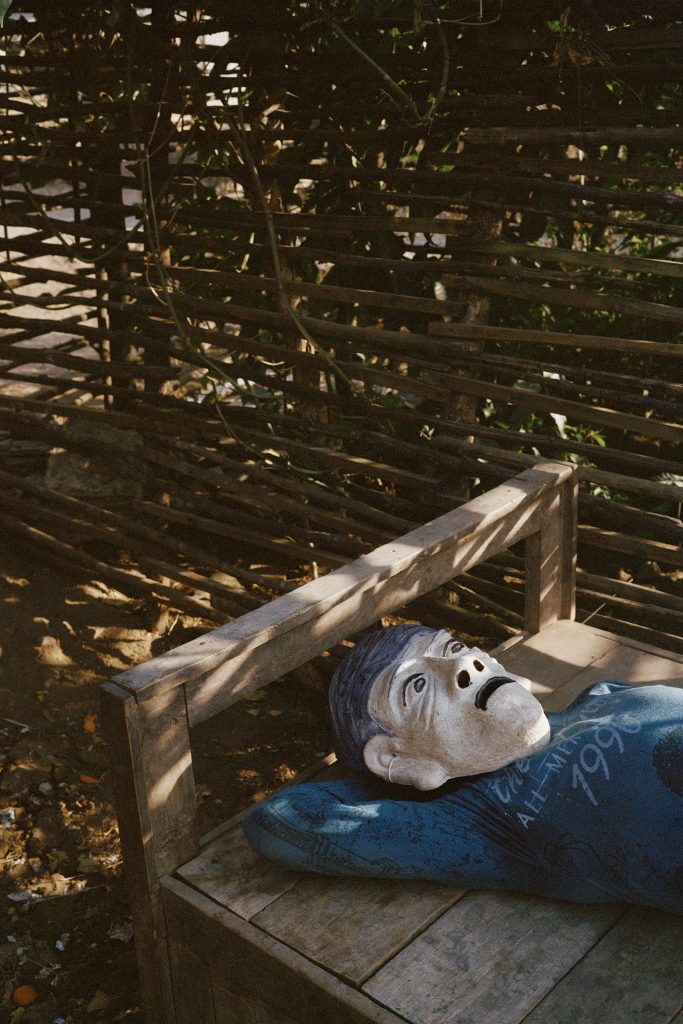
Gauri Gill, Untitled (7) from the series Acts of Appearance, 2015–ongoing. © Gauri Gill 2021. Image courtesy the artist and James Cohan, New York.
When life feels unbearably heavy, the New Delhi-born photographer turns to Buddhist teachings, which she credits with understanding the workings of the mind much earlier than modern Western psychology got to it. “It begins with focusing on where I am physically, to who or what is around me and what I might be doing,” she says. “I try and compress the timespan to just that moment or hour or the day ahead. It can be helpful to breathe deeper, to attend to chores that don’t require thought, to make sure I am fed and watered and have gotten enough sleep, to go for a walk, seek out my community of beloved friends and family, or absorb myself in a repetitive and creative task like editing my pictures, and to study.” Gill is a follower of Nalanda Buddhism, which has taught her that “any seemingly solid feeling I am experiencing is only a result of the thought or discriminatory mind that has produced it, and can therefore be reframed.” And while she says she is only a beginner in her philosophical studies, “those who have truly realized and live this view—like the great Nalanda masters—are both fearless and infinitely kind.”
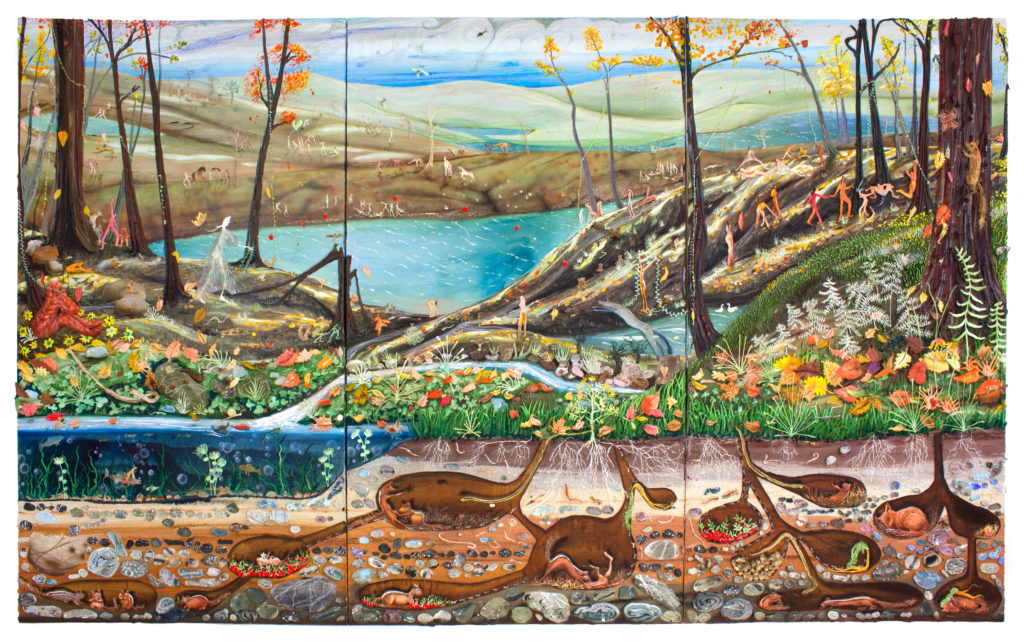
Kate Klingbeil, Leaf Season (2020). Courtesy the artist and Field Projects.
“In my experience, the last few weeks before a show are all-consuming,” the Milwaukee-based artist Kate Klingbeil warns. “If I don’t prioritize my basic needs, it’s easy to hyperfocus on my work and risk burning out and getting sick. I try to arrive at the studio with enough food for a double shift, hydrate, take breaks outside to look at the water, get my daily dose of memes, and keep my weekly therapy appointment. There’s more to life than the work but sometimes it’s also self-care to cancel everything and paint.”
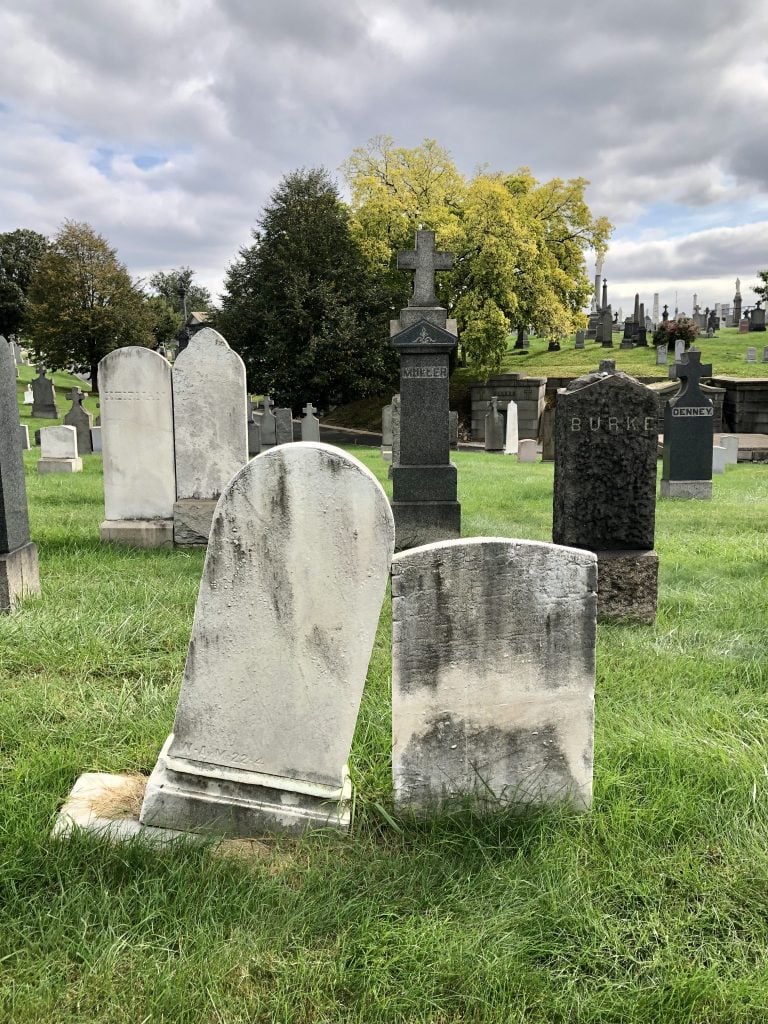
Photograph by Langdon Graves.
The Brooklyn-based artist Langdon Graves needs just two things to stay sane: music and walks. “Specifically, walks around the cemetery near my apartment,” she says. “The cemetery is peaceful by design and almost empty of (living) people, and full of very old trees and physical declarations of love and reverence. Time doesn’t matter there, which feels like a relief. Listening to music, especially if it’s new to me, can be like divination. Songs tell stories and present ideas and symbols that can help put things into perspective. I also like to play music and learning a new song is an incredible exercise in self-care. I get to grow a little bit, and it doesn’t matter how much or how well because (probably) no one else will hear it, it’s just for me. These things provide opportunities for solitude and reflection, which I’ve realized I need in order to be productive.”
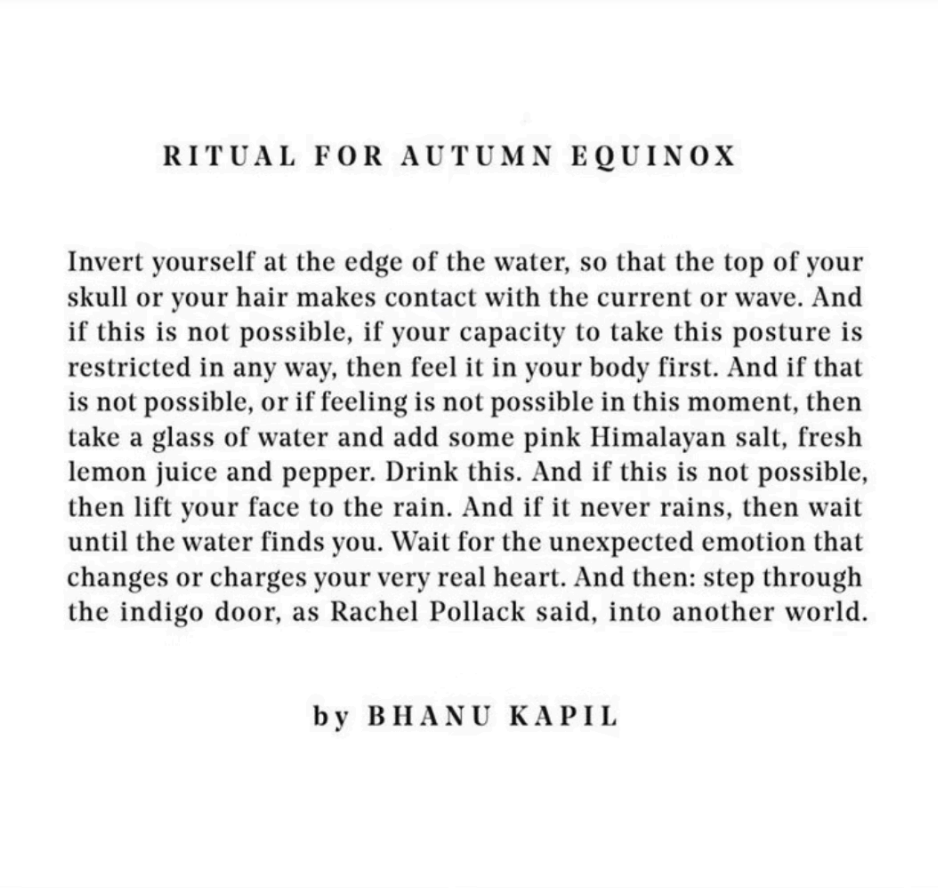
Courtesy of Naima Green.
The New York photographer Naima Green does not avoid getting emotional if she needs to. “I cry a lot,” she says. She also has some other ways of coping with life: “I pull tarot cards. I take tinctures made by friends. I see my acupuncturist. I return to this poem [above] by Bhanu Kapil. And I try to have firm boundaries around quality time with my partner, family, and close friends.”
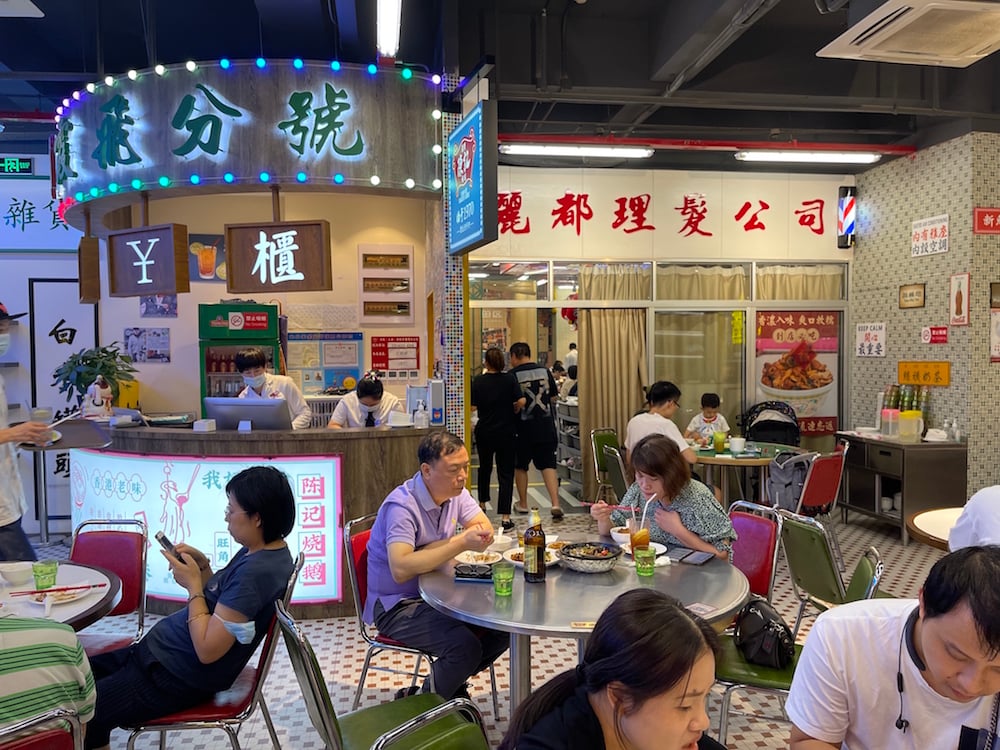
Image courtesy Cao Fei.
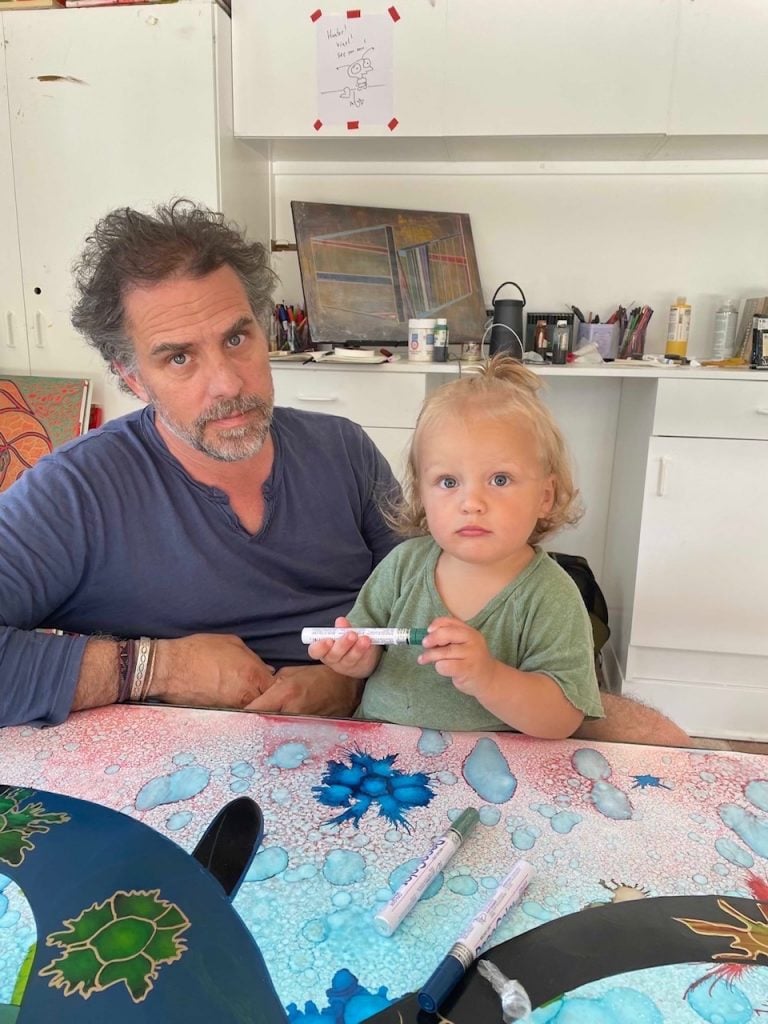
Hunter Biden and his son. Image courtesy Hunter Biden.